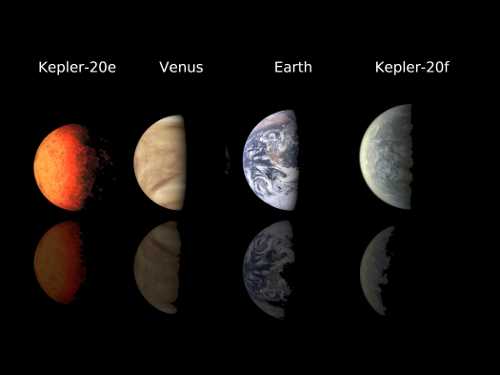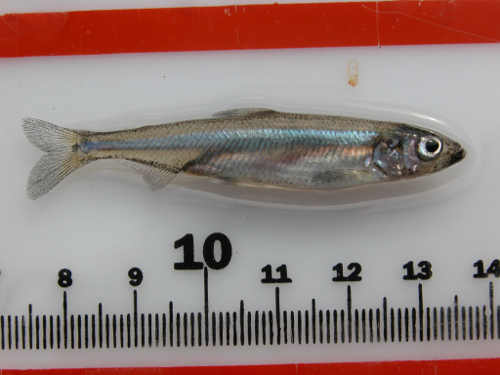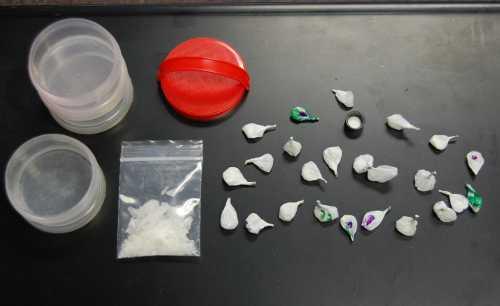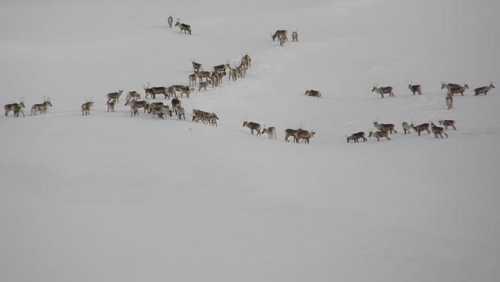- Lake County News Reports
- Posted On
The Veggie Girl: Anise appreciation
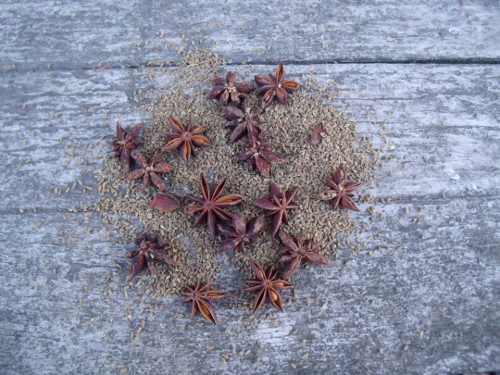
I’m chewing on anise seeds as I write, having just tossed a pinch or two into my mouth. The taste is pleasant, a cross between licorice and fennel.
These little seeds have been used as a breath freshener since ancient Roman times, when noted Roman scholar Pliny the Elder said that anise “removed all bad odors from the mouth if chewed in the morning.” Anise extract is still used in breath-freshening products, such as toothpastes and mouthwashes that favor natural ingredients.
The Romans widely cultivated anise for its fragrance, flavor and medicinal properties, which, in their opinion, included relief from epileptic seizures, maintaining a youthful appearance and avoidance of bad dreams.
The Romans (as well as the Greeks) found other medicinal uses for anise that are still extant today, such as a remedy for coughs and improvement of the digestive system.
They mixed the seeds into a cake called “mustaceum” that was eaten as a digestive aid at the end of a meal. This spicy cake became a favorite after heavy meals, including wedding feasts, and some believe the modern tradition of the wedding cake is an outgrowth of this practice.
Anise is still recommended for improving digestion (and some say for preventing flatulence), and making tea is a simple way to achieve this. Crush the seeds and steep a teaspoon in a cup of boiled water for about 10 minutes. Strain and sip slowly. (I’m drinking a cup of it now, having moved on from chewing on seeds.)
The Romans weren’t the only ancients who valued this little seed. The Egyptians have cultivated the plant for over 4,000 years, with a reference to anise found in an Egyptian papyrus dating to 2,000 B.C.
This herb native to the Mediterranean region is used to impart a licorice-like flavor to a variety of foods and drinks around the world. Scandinavian, Greek, Moroccan and Arabic cuisines have all made good use of anise. It’s also popular in the cuisine of India, where it’s not distinguished from fennel. The same name is applied to both.
It’s popular in Spanish cookery, as well as in cuisines throughout South America, as Spanish conquistadors brought anise to the shores of the new world.
The seed may be used whole or ground, and if you grow anise in your garden, its tender, young leaves may be used in a salad or as a bouquet to flavor a stew. In its seed form, anise (also known as aniseed) will stay fresh for a couple of years. It quickly loses its savor when ground, so should be ground only as needed.
Anise is a popular flavor in cookies, cakes, and confections throughout the world, including in British aniseed balls, Australian humbugs, New Zealand aniseed wheels, Italian pizzelle, German Pfeffernusse and Springerle, Austrian Anisebögen, Netherland muisjes, Norwegian knotts, New Mexican Bizcochitos and Peruvian picarones. Many of these are popular Christmas treats.
While the flavor of anise is quite similar to that of licorice, the two plants are not related. In some cases, anise is combined with licorice in candies to impart a stronger flavor, such as in black jelly beans that are naturally flavored.
One of the most noted uses of anise is as a flavoring in various liqueurs. Equal parts of anise, fennel, and coriander seeds flavor sugared vodka to create anisette. Anesone is a similar liqueur, but stronger and sweeter.
A number of other anise liqueurs are made in countries all over the world. In addition to anisette, the French make pastis; the Spaniards, ojen; the Peruvians, anis; the Mexicans, xtabentun; the Puerto Ricans, tres castillos; the Turk, raki; the Colombians, aguardiente; the Italians, sambuca; the Dutch brokmopke; the Bulgarians, mastika; the Germans, jagermeister; the Greeks, ouzo; and in the Middle East, arak.
In addition, the infamous and once illegal alcohol from France, absinthe, is flavored with anise.
The most powerful flavor component of the essential oil of anise, anethole, is also found in an unrelated spice, star anise, which features prominently in Asian cooking. Star anise is the seed pod of an evergreen tree that is native to China and Japan. Its eight symmetrical appendages inspire its name and give a home to the tree’s seeds.
Star anise is typically added whole to flavor dishes; however, in its ground form it is a component of Chinese Five Spice, a pungent spice blend that also features fennel, cloves, Chinese cinnamon, and Sichaun pepper.
Anise and star anise have very similar licorice-like flavor profiles, though star anise is significantly stronger.
On this festive day, I offer three recipes: pears poached with star anise, biscotti flavored with anise seeds and anisette liquor, and a slushy beverage that takes advantage of the happy relationship between lemon and anise.
While it’s not necessarily the season for icy drinks, the slushy would be a wonderful use of the Meyer lemons that are in season this time of year. As well, it could be a surprising cocktail (with or without alcohol) at a New Year’s Eve party.
Before I leave, here’s a piece of anise-related trivia: humans aren’t the only species to enjoy its flavor. Reputed to be a favorite of mice, it was used as bait in medieval mouse traps.
In addition, it’s often referred to as catnip for dogs. While it doesn’t have the “crazy-making” affects of the feline favorite, it’s beloved enough by our canine friends to be the scent used on the “rabbit” that racing greyhounds chase around the track.
If you’re celebrating Christmas today, I hope your holiday is a joyous one.
Enjoy!
Cinnamon-anise poached pears
2 pears, peeled, halved, and cored
2 cups water
2/3 cup sugar
2 cinnamon sticks
2 star anise pods
½ cup heavy cream
1 tablespoon sugar
¼ teaspoon ground cinnamon
Combine water, sugar, cinnamon sticks, and star anise pods in a medium saucepan. Add pear halves.
Bring liquid to a boil; turn heat down so liquid remains at a steady simmer. Simmer pears until tender and water is reduced to a somewhat syrupy consistency.
Meanwhile, whip cream with sugar and cinnamon until soft peaks form.
When pears are tender, remove from pan, reserving liquid.
Serve pears with a drizzle of the poaching syrup and the whipped cream. This recipe makes four servings.
Anise biscotti
2 cups all purpose flour
2 teaspoons baking powder
½ teaspoon salt
1 stick unsalted butter, at room temperature
1 cup granulated sugar
2 large eggs
¼ cup anisette or sambuca
1 teaspoon vanilla extract
½ cup pine nuts, lightly toasted
1 tablespoon anise seeds
Preheat oven to 350 degrees F. Line 1 large baking sheet with parchment paper.
Combine the flour, baking powder, and salt in a small bowl.
In a large bowl, cream together the butter and sugar until fluffy. Add the eggs, beating after the addition of each. Add the dry ingredients, alternating with the anisette. Add the vanilla and mix well. Fold in the nuts and anise seeds.
Divide the dough into two equal pieces. On a lightly floured surface, roll each under your palms to make a log about twelve inches in length and two inches in diameter. Place logs on baking sheet about two inches apart. Bake until golden brown and firm, about 30 minutes. Remove from the oven and let cool completely on the sheet.
Reduce the oven temperature to 300 degrees F.
Transfer the cooled cookie logs to a large cutting board and with a heavy knife cut into slices about ¾ inches thick. Spread the cookies on the baking sheet. Bake until firm and crisp, about 30 minutes, turning over halfway through the cooking. Remove from the oven and transfer to a wire rack to cook.
This recipe by Emeril Lagasse yields about three dozen biscotti cookies and is courtesy of www.FoodNetwork.com. Chef Lagasse recommends serving these biscotti with lemon ice cream, but they’re also wonderful dunked in coffee.
Esther’s note: Chopped local walnuts may be added in place of the pine nuts.
Lemon anise slush
½ cup fresh lemon juice, plus more to taste
1/3 cup sugar or honey, plus more to taste
¾ teaspoon anise seeds
1 cup water (or vodka for an adult version)
Ice cubes to fill blender
Blend lemon juice, sugar or honey, and anise seeds in a blender until the seeds break up, at least 30 seconds, but longer, if needed.
Add the water (or vodka) and enough ice to fill the blender. Blend until smooth.
If necessary, add more water, a little at a time, for desired consistency.
Adjust for sweetness and lemon as you go.
Serve immediately. This recipe makes four to six servings.
This recipe is courtesy of www.101cookbooks.com.
Esther Oertel, a freelance writer, cooking teacher, and speaker, is passionate about local produce and all foods in the vegetable kingdom. She welcomes your questions and comments and may be reached at This email address is being protected from spambots. You need JavaScript enabled to view it..
Follow Lake County News on Twitter at http://twitter.com/LakeCoNews, on Tumblr at www.lakeconews.tumblr.com, on Google+, on Facebook at www.facebook.com/pages/Lake-County-News/143156775604?ref=mf and on YouTube at www.youtube.com/user/LakeCoNews .

 How to resolve AdBlock issue?
How to resolve AdBlock issue? 